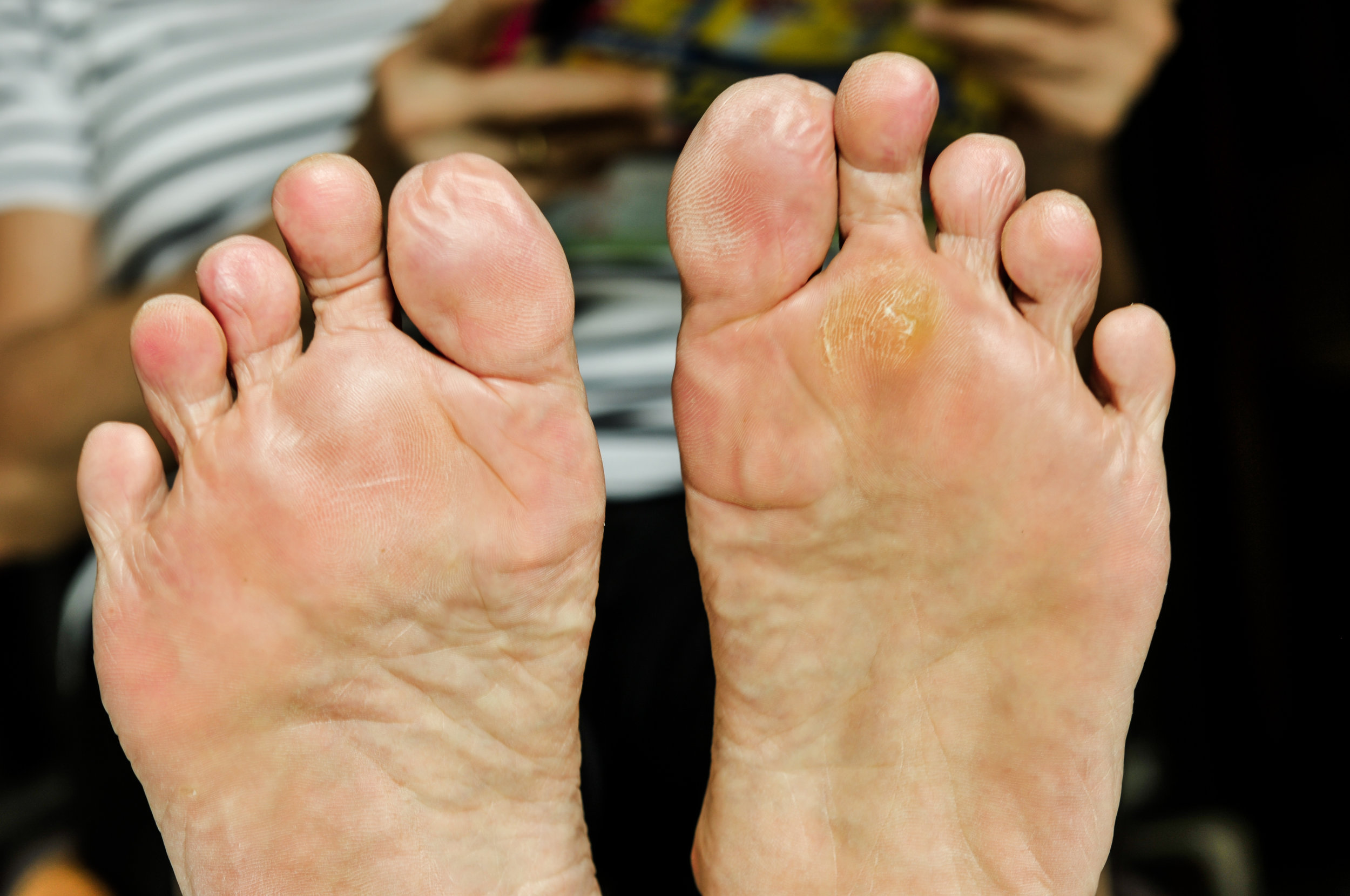COMMON PROBLEMS
The list below is of the more common complaints I see and is by no means exhaustive. The information offered is of a general nature and not to be used as a guide to treatment...
Heel & Arch Pain
Heel pain is common and is the presenting complaint in just under half of my new patients!
Heel pain is often diagnosed as Plantar Fasciitis, but often this is not entirely accurate. In a true plantar fasciitis case, tension along the line and insertion point of the fascial tissue causes inflammation and exquisite pain. Other common causes of heel pain are fat pad trauma, trigger points within the muscle of the arch and nerve entrapment. Less common causes include stress fractures of the heel bone, infection, tumours and partial or full rupture of the plantar fascial tissue.
Treatment for heel and arch pain depends on the cause and I'll often order an ultrasound to confirm the diagnosis. Dryneedling, low level laser and compression therapy are very effective at reducing pain. Orthoses are often used to rebalance the foot and change the load moving through the foot if this is the cause of the tissue trauma.
Bunions
A bunion is a deformity of the big toe joint. The toe deviates toward and sometimes overlaps the second toe causing joint deformity and stretching of the soft tissues around it.
Bunions can be painful but often are not, however finding shoes to comfortably fit and look good can be a big problem. I often see bunions in feet which are unstable and roll in too much and therefore they are commonly seen in several members of the same family. They can also be associated with diseases such as arthritis.
Bunions can cause stiffness and pain in the joint and often cause changes in the walking (gait) pattern which can lead to several other problems.
Non surgical treatment can be effective at settling the pain associated with bunions. Low level laser and dry needling can reduce the immediate pain.
Whilst orthoses cannot prevent bunions they are effective at stabilising and offloading the joint, therefore significantly reducing the pain.
If surgical correction is indicated, X rays will be ordered and a referral to a surgical fellow can be arranged.
Cracked Heels
Cracked heels are a common problem with Perth's FIFO population. They are also a problem in Mums who love to wear thongs. They can be unsightly and extremely painful. But fear not!!! This is what we do!!!!
Debriding excessive and dry cracks from heels is extremely satisfying as all patients are so grateful and amazed that their heels can be restored so easily. Oh, and you know that lovely cream you once bought that sits beside your bed for dry heels... lets use it huh?
Corns
Corns are conical lesions of keratin which become very hard and deep. Often found embedded within callus lesions, corns can be very painful and inflamed. A common place for corns are on the outside of the 5th toes and in between the 4th and 5th toes.
The causes of these lesions can be friction from footwear, friction from abnormal gait patterns, bony deformities such as bunions or claw toes, and thinning of the protective fat pads as we age.
Treatment offers immediate relief and involves the safe and gentle debridement of the lesions with surgical blades. Advice will be offered on footwear choices and the use of orthoses if necessary to offload any excessive joint pressure.
Calluses
Calluses are layers of thickened skin caused by friction. They can become hard and rough and are often painful as they increase the pressure of the skin underneath.
Achilles tendinopathy
This condition is an overuse injury and causes pain, swelling and stiffness at the back of the heel.
The causes of Achilles tendinopathy are wide and varied. Factors such as activity level, age, flexibility, lower limb biomechanics (how the leg moves) and muscle strength all need to be considered.
To recover, any biomechanical issues must be addressed. Orthoses are helpful, as well as a muscle strengthening program to even out the load through these tissues. Low level laser and joint mobilisations are useful to reduce pain and stiffness. Common in runners, dancers and FIFO workers, Achilles pain responds well to treatment.
In the presence of extensive spur development at the insertion site of the Achilles, surgery may be indicated, however conservative (non surgical) treatment should be considered first.
Ingrown Toenails
Ingrown toenails happen when the side of the nail pushes against or pierces the flesh of the toe. This causes pain, redness, infection and sometimes odour and pus. Some nails are curved in shape which predisposes them to pinching the skin. Improper cutting technique, habitual picking, direct trauma, or tight fitting shoes can also cause ingrown toenails.
Treatment involves the clearance of the offending nail tissue from the side of the toe. This is often done with minimal pain and provides great and immediate relief. Managing any underlying infection with antiseptic creams and/or antibiotics may be prescribed. In severe and/or recurring cases a minor surgical procedure may be recommended to permanently correct the nail shape, which is highly effective.
Ankle Sprains
We’ve all experienced this one!! A common injury amongst active people of all ages, ankle sprains can be either mild or severe.
The outside ligaments of the ankle are the most commonly injured when the foot rolls excessively to the outside after losing balance, tripping over something or stepping on an uneven surface or object (those darn conkeynuts). The display following a severe sprain can be full of drama! Strong pain, extensive bruising, swelling – enough to guarantee much sympathy for days and sometimes even weeks.
Treatment for any ankle sprain is essential, even if you consider it very mild. This will reduce further complications with the ankle function and stability later on.









